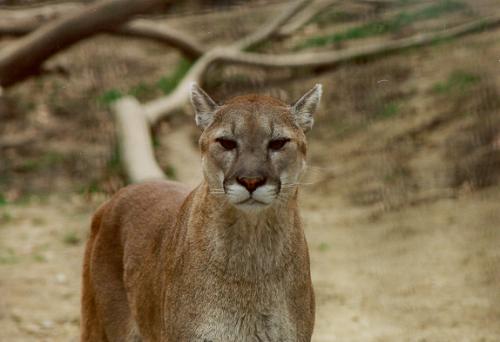
Cougars (Felis concolor) were first listed on the endangered species list on August 14,1991. They are often called mountain lions, pumas, panthers, or catamounts. The cougar is a forceful cat with a graceful and slender body and exceptionally strong legs. It has an remarkably lengthy tail that is more than half its head and body. The cougar has short reddish-brown or gray-brown fur. Its length is 5 to 6 feet. The average male weighs 125 pounds, and the female weighs 100 pounds. The cougar's strong legs, provide the it with tremendous jumping skill. They have been witnessed jumping 18 feet up a side of a cliff, and broad jumping up to 30 feet.
Both of these pictures are from the website for the Henson Robinson Zoo in Springfield, Illinois at http://www.hensonrobinsonzoo.org/. They were taken by Donald Landry. Permission to use the photos was granted by Talon J. Thornton of the Henson Robinson Zoo.
Cougars are very secretive animals, and sightings are a rarity. Unlike most wildcats, cougars hunt at night and in the day. It preys on mainly deer, sheep, rodents, hare, and beaver. The cougars are throughout the U.S., with their home ranges depending on the available prey and type of habitat. Cougar home ranges usually intertwine with each other. With no breeding season, cougars mate all year long. Typically, a female will have 2-3 cubs. A female usually breeds every two to three years. The cougar is not a threatened animal, however, it is listed on the endangered species list because of the eastern cougar, a subspecies of the cougar.
